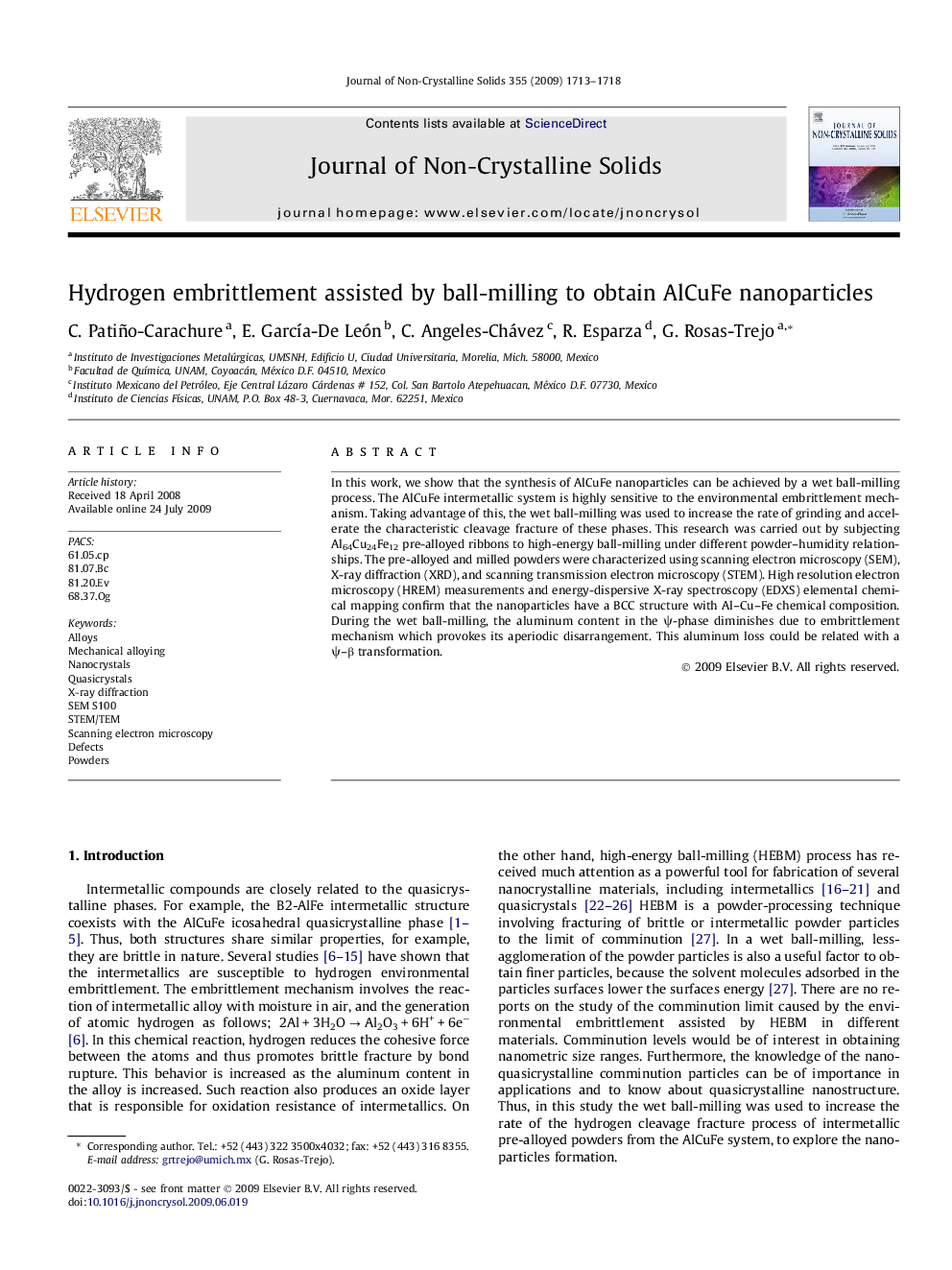| Article ID | Journal | Published Year | Pages | File Type |
|---|---|---|---|---|
| 1483640 | Journal of Non-Crystalline Solids | 2009 | 6 Pages |
Abstract
In this work, we show that the synthesis of AlCuFe nanoparticles can be achieved by a wet ball-milling process. The AlCuFe intermetallic system is highly sensitive to the environmental embrittlement mechanism. Taking advantage of this, the wet ball-milling was used to increase the rate of grinding and accelerate the characteristic cleavage fracture of these phases. This research was carried out by subjecting Al64Cu24Fe12 pre-alloyed ribbons to high-energy ball-milling under different powder-humidity relationships. The pre-alloyed and milled powders were characterized using scanning electron microscopy (SEM), X-ray diffraction (XRD), and scanning transmission electron microscopy (STEM). High resolution electron microscopy (HREM) measurements and energy-dispersive X-ray spectroscopy (EDXS) elemental chemical mapping confirm that the nanoparticles have a BCC structure with Al-Cu-Fe chemical composition. During the wet ball-milling, the aluminum content in the Ï-phase diminishes due to embrittlement mechanism which provokes its aperiodic disarrangement. This aluminum loss could be related with a Ï-β transformation.
Keywords
Related Topics
Physical Sciences and Engineering
Materials Science
Ceramics and Composites
Authors
C. Patiño-Carachure, E. GarcÃa-De León, C. Angeles-Chávez, R. Esparza, G. Rosas-Trejo,
